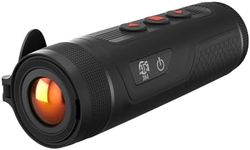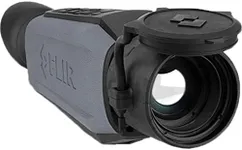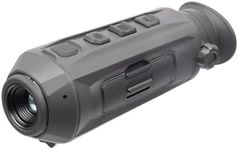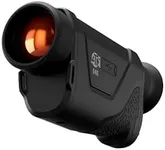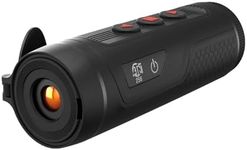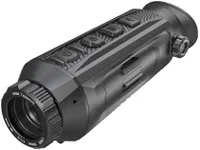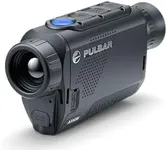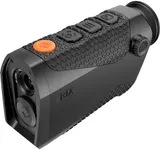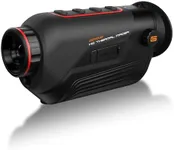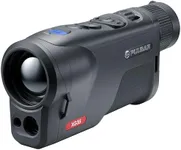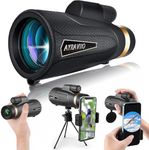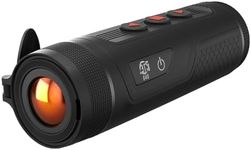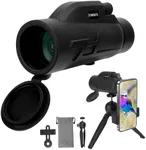Buying Guide for the Best Thermal Monoculars
Choosing the right thermal monocular can greatly enhance your outdoor adventures, whether you're hunting, wildlife watching, or conducting search and rescue operations. Thermal monoculars use infrared technology to detect heat signatures, allowing you to see in complete darkness and through various obstacles like fog or smoke. To make an informed decision, it's important to understand the key specifications and how they align with your needs.ResolutionResolution refers to the clarity and detail of the thermal image produced by the monocular. Higher resolution provides sharper and more detailed images, which is crucial for identifying objects and animals at a distance. Resolutions typically range from 160x120 to 640x480 pixels. If you need to spot and identify targets from far away, opt for higher resolution. For general observation or close-range use, lower resolution may suffice.
Detection RangeDetection range is the maximum distance at which the monocular can detect a heat source. This is important for determining how far you can see and identify objects. Detection ranges can vary from a few hundred meters to several kilometers. If you're using the monocular for long-range spotting, choose a model with a longer detection range. For shorter distances or indoor use, a shorter detection range will be adequate.
Lens SizeLens size affects the field of view and the amount of thermal radiation the monocular can capture. Larger lenses provide a wider field of view and better image quality, but they also make the device bulkier. Lens sizes typically range from 19mm to 75mm. If you need a wide field of view for scanning large areas, opt for a larger lens. For portability and ease of use, a smaller lens may be more suitable.
Refresh RateRefresh rate is the speed at which the thermal image is updated, measured in Hertz (Hz). Higher refresh rates provide smoother and more fluid images, which is important for tracking moving objects. Common refresh rates are 9Hz, 30Hz, and 60Hz. If you need to track fast-moving targets, choose a higher refresh rate. For stationary observation, a lower refresh rate will be sufficient.
Battery LifeBattery life determines how long the monocular can operate on a single charge. Longer battery life is essential for extended use in the field. Battery life can range from a few hours to over 10 hours. If you plan to use the monocular for long periods without access to charging, opt for a model with longer battery life. For shorter outings, a shorter battery life may be acceptable.
Weight and SizeWeight and size affect the portability and ease of handling of the monocular. Lighter and more compact models are easier to carry and use for extended periods. However, they may have fewer features or lower performance. If you need a monocular for long hikes or extended use, choose a lightweight and compact model. For stationary use or when performance is a priority, a larger and heavier model may be preferable.
DurabilityDurability refers to the monocular's ability to withstand harsh conditions, including water resistance, shock resistance, and overall build quality. Durable models are essential for rugged outdoor use. Look for features like waterproofing, dustproofing, and robust construction. If you plan to use the monocular in extreme environments, prioritize durability. For casual use, less rugged models may be sufficient.

